The Omai property is located within the prolific Guiana greenstone belt in Guyana, located on the north coast of South America.
Omai produced 3.8 million ounces averaging 1.5 g/t Au between 1993 and 2005, while the gold price was less than $400/oz, profitably producing an average of more than 300,000 oz Au per year.
Omai still hosts two significant gold deposits, the Wenot shear-hosted gold deposit, and the adjacent intrusion-hosted Gilt Creek Deposit.
In October 2022, the Company released a NI 43-101 Mineral Resource Estimate (MRE), which more than doubled the initial NI 43-101 completed in January 2022. The October MRE incorporated the historic resource at Gilt Creek.
In February 2024, the Company announced an updated MRE on the Omai Gold project. Most significantly, the Wenot MRE increased the Indicated MRE to 834,000 oz (a 10% increase in ounces and a 10% increase in average grade from October’s MRE) at 1.48 g/t Au and the Inferred MRE to 1,614,000 oz (a 45% increase in ounces and a 16% increase in average grade from October’s MRE) at 1.99 g/t Au. The Resource Estimate incorporates two gold deposits that occur on the property, the shear-hosted Wenot deposit and the adjacent intrusive-hosted Gilt Creek deposit.
Wenot deposit (a constrained pit approach is applied):
- 834,000 ounces of gold (Indicated), a 10% increase over the October 2022 MRE
- 1,614,000 ounces of gold (Inferred), a 45% increase
- 1.48 g/t Au grade of Indicated MRE, a 10% increase
- 1.99 g/t Au grade of Inferred MRE, a 16% increase
Gilt Creek deposit (an underground mining approach is applied):
- 1,151,000 ounces of gold (Indicated) at a grade of 3.22 g/t Au, as per October 2022 MRE
- 665,000 ounces of gold (Inferred) at a grade of 3.35 g/t Au, as per October 2022 MRE
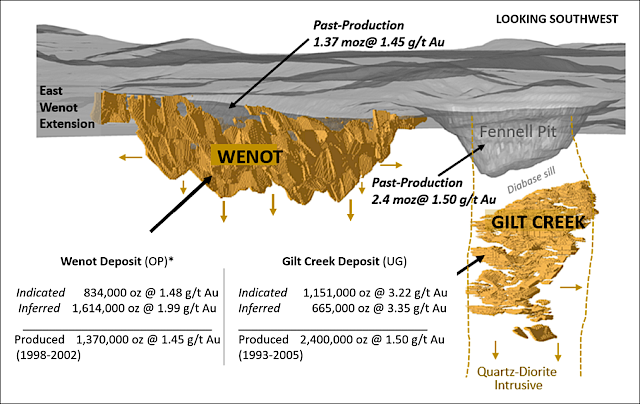
Figure 1: Wenot and Gilt Creek Deposits
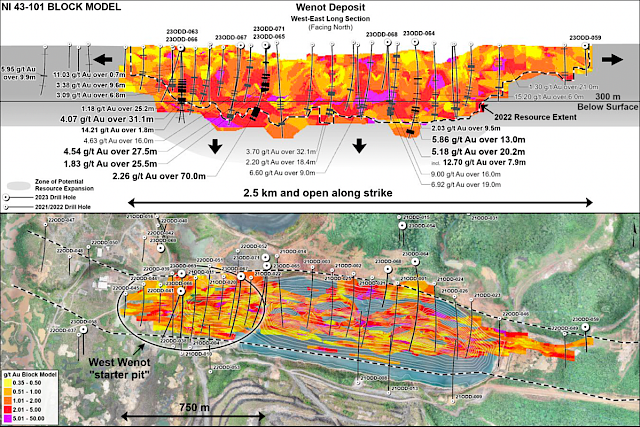
Figure 2: Wenot Gold Deposit – Illustrating Mineral Resource Estimate (February 2024)
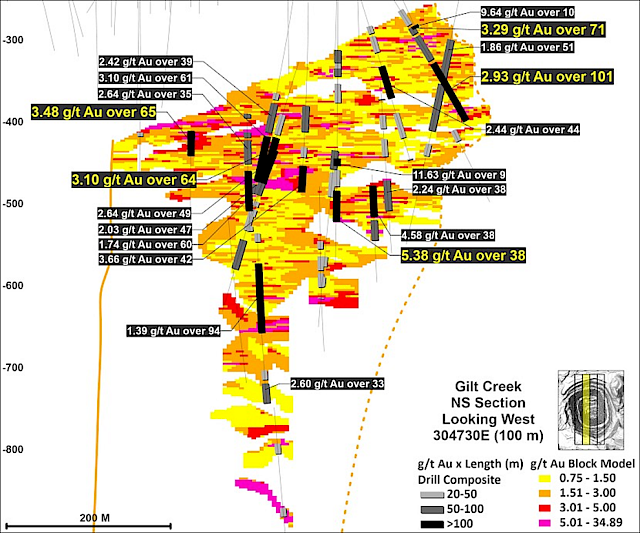
Figure 3: Gilt Creek Gold Deposit – Cross Section (Looking West)
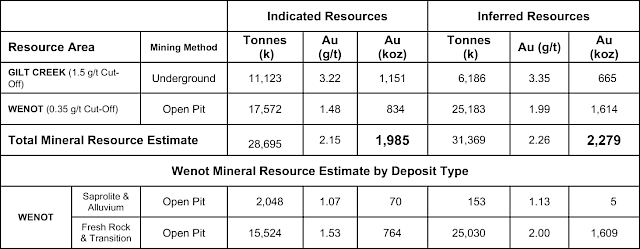
Figure 4: January 2024 Mineral Resource Estimates
Wenot Deposit Preliminary Economic Assessment (“PEA”) – April 2024
In April 2024, the Company announced the completion of a Preliminary Economic Assessment (“PEA”) that resulted in an after-tax NPV5% of $556 million and 19.8% Internal Rate of Return (“IRR”) at a $1,950 base case gold price for the Wenot Project, one of the two gold deposits located on the property.
The PEA supports an initial open pit mining scenario for production of 1.84 million ounces, averaging 142,000 ounces of gold per year over a 13-year mine life, with peak year production of 184,000 ounces. By applying the higher spot gold price recently experienced, for example, at $2,200/oz, this supports an after-tax NPV5% of $777 million, a 24.7% IRR, and a payback period of 3.5 years. (Click here for more information on the PEA.)
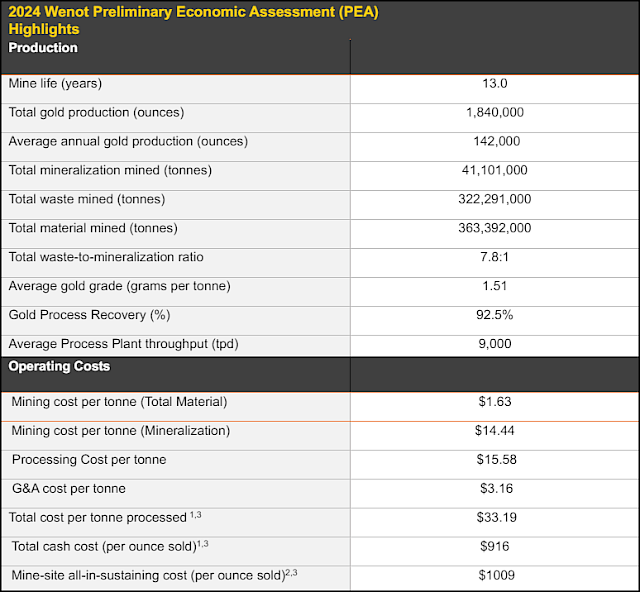
Figure 5: Financial and Operating Metrics from the Preliminary Economic Assessment
Resource Attributes and Potential for Expansion
With this substantial resource base, the focus for 2024 is on infill drilling and exploration for additional new gold deposits within the prospective geology that extends across the full property.
Very fortunately, the Gilt Creek deposit and the Wenot deposit each exhibit distinctive geophysical signatures that assist in identifying high-probability targets. Analysis of our property-wide airborne magnetic data included applying 3-D magnetic vector inversion modelling techniques.
By integrating these results with our comprehensive database of historical geological data, we can identify several exploration targets that show combined features suggesting excellent potential for new deposits.
Management believes that Omai has the potential to be a significant gold camp, hosting a series of economic deposits, similar to other major mines in the Guiana Shield such as the Rosebel Mine in nearby Suriname which has hosted more than 10 million ounces in 8 deposits.
While the Omai mine was operating, little to no exploration was conducted outside of the mined deposits, leaving significant potential for discoveries.
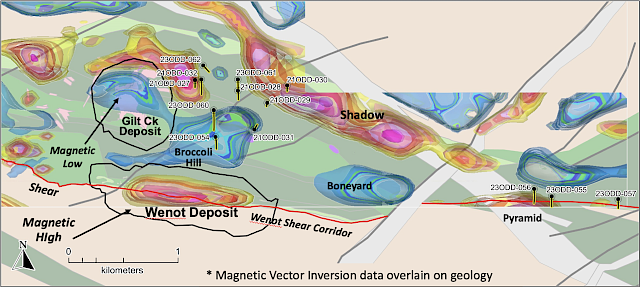
Figure 6: Geophysics Targets
OMAI GOLD MINERAL TENURE IN GUYANA
Omai Gold has a very simple land tenure position. It holds a 100% interest in 3 Licenses granted by the Guyana Geology & Mines Commission. No mineral rights are held by joint venture nor subject to third-party payments. The total annual carrying charges are currently in aggregate less than US$20,000 per annum.
The Omai property consists of:
- One 4,590-acre Prospecting License granted directly from the government and held 100% by Omai Gold’s wholly-owned subsidiary Avalon Gold Exploration Inc. (Guyana), and
- Two Mining Permits for Medium Scale Operations totalling 1,519 acres are held 100% via a commercial contractual agreement with a Guyanese company.
LOCATION AND ACCESS
The Omai property is located 165 km south-southwest of the capital city of Georgetown, Guyana. The property is accessed by road from Georgetown, via Linden, the second-largest town in Guyana with a population of 45,000.
This road continues south to Lethem at the Brazilian border. The highway is paved approximately 110 km, as far as Linden, and the remaining 80 km to the Omai turnoff is via a dirt road. From the turnoff, the road to the Omai landing is a further 10 km and extends to the east side of the Essequibo River where a barge provides passenger and vehicle access to the Omai property.
Upgrading of the road between Linden and Lethem started in May 2022 after the Government signed the US$190 million contract. An initial 122 km section from Linden to the Mabura Hills will pass the Omai turnoff and this section is scheduled for completion in December 2024.
This will result in a paved road extending all the way from Georgetown to the Omai turnoff, which will greatly reduce travel time, and leave only 10 km of road to the Omai landing unpaved. Access will not be impeded during the construction. There is alternate road access via a road for the Amalia Falls hydro project that is also expected to be upgraded as the Amalia Falls project progresses.
The Omai property also has access via a 1 km airstrip that provides convenient 40-minute access to Georgetown. This airstrip passes regular inspections by the aviation authorities.
When the Omai mine was in production, it used diesel gensets as a power source. The current exploration camp has two generators to serve the small-scale power needs of the exploration camp and facilities.
There is a planned hydropower project, Amaila Falls, located approximately 110 km west of Omai. Although this has been delayed several times, the design, route, and government approvals have proceeded in the meantime for a 230kV transmission line. This distribution line is expected to run within 30 km of the Omai property and could likely be a source of power for a future mining operation at this location.
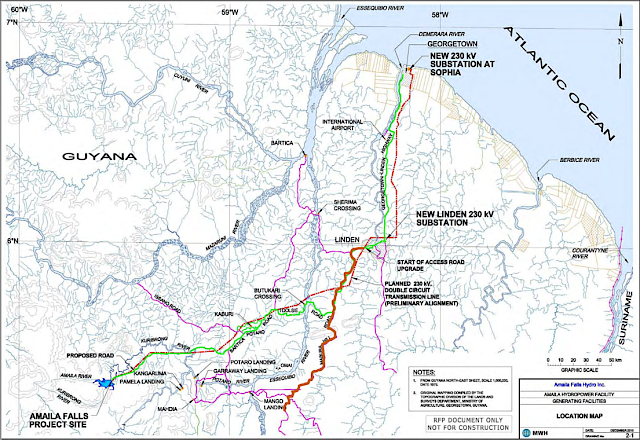
Figure 7: Map Showing Road Access from Georgetown and Proposed Infrastructure
EXPLORATION ACTIVITY
The Company commenced exploration on the Omai property in late 2020 following the completion of the Company’s reverse-takeover transaction. At that time, the Company completed construction on a modern exploration camp capable of housing up to 60 workers. The camp includes exploration offices and a large facility for core logging, sampling, and storage.
2021 Exploration Highlights
During the first quarter of 2021, the Company re-logged and re-sampled 6,000 metres of drill core that were drilled in 2012 and recovered and remediated in 2020. The core had been stored in a secure government facility since a limited exploration program ceased operations in 2012. Assay results from these 2012 holes demonstrate that significant gold mineralization extends at least 150 metres below the bottom of the Wenot Pit, at similar grades and widths.
In 2021, the Company completed 9,367 metres of diamond drilling, with the majority of the drilling focused on the discovery of an extension of mineralization below and adjacent to, the Wenot Pit, which produced 1.4 million ounces of gold between 1994 and 2003.
Selected significant results from the Wenot drilling in 2021 included:
- 2.2 g/t Au over 19.5 m, 3.6 g/t Au over 13.5 m, and 9.0 g/t Au over 16 m including 1 m of 127.7 g/t Au, demonstrating the potential for multiple mineralized zones (21ODD-001)
- 3.6 g/t Au over 32.1 metres including 26.7 g/t Au over 0.4 m and 25.7g/t Au over 1 m and an additional intersection further downhole of 2.2 g/t Au over 18.4 m (21ODD-002)
- 1.7 g/t Au over 14.1 m and 4.0 g/t Au over 3.1 m in hole 21ODD-003
- 6.6 g/t Au over 9.0 m, 2.8 g/t Au over 13.0 m, 4.7 g/t Au over 4.0 m and 1.9 g/t Au over 10.2 m (21ODD-008)
- 1.5 g/t Au over 12.4 m, 1.6 g/t Au over 9.2 m and 5.1 g/t Au over 2.0 m (21ODD-011)
- 6.92 g/t Au over 19 m, and 2.2 g/t Au over 16m (21ODD-013)
- 56.0 g/t Au over 1.5m, and 2.12 g/t over 12m (21ODD-014)
- 1.15 g/t over 19.5 m in hole 21ODD-026 (Section 305840E)
- 22.05 g/t Au over 1.7 m, 5.28 g/t Au over 2.7 m and 3.33 g/t Au over 4.4 m (21ODD-020)
- 5.16 g/t Au over 8.4 m, 5.0 g/t Au over 6.0 m, 1.46 g/t Au over 11 m with nearby 1.03 g/t Au over 5.0 m (21ODD-021)
- 16.77 g/t Au over 6.0 m, 1.97 g/t Au over 16.7 m, and 4.63 g/t Au over 20.0 m (21ODD-022)
- 3.3 g/t Au over 14.1 m, 2.96 g/t Au over 6.0 m and 0.82 g/t Au over 22.0 m (21ODD-023)
- 15.2 g/t Au over 6.0 m, 1.38 g/t over 16.5 m and 1.8 g/t over 13.5 m (21ODD-024)
- 2.3 g/t Au over 10.5 m (21ODD-025)
- 2.12 g/t Au over 10.5 m and 1.15 g/t over 19.5 m (21ODD-026)
2022 Exploration Highlights
Based on these results, the Company reached a significant milestone with the January 4, 2022 announcement of a maiden MRE for Wenot.
The maiden Wenot MRE consisted of:
- Indicated resources of 16.7 million tonnes averaging 1.31 grams of gold per tonne for 703,300 ounces of gold; and
- Inferred resources of 19.5 million tonnes averaging 1.50 grams of gold per tonne for 940,000 ounces of gold
The QP was able to integrate not only the 16 diamond drill holes completed by the Company in 2021 but also incorporated 10,508 assay results from 549 diamond drill holes totalling 21,541 metres within the mineralized wireframes. This was possible since the Company has the extensive historical database that includes both production and exploration data.
The multiple subvertical mineralized shears that comprise the new Wenot deposit are consistent with the material historically mined in the overlying pit, and further, drilling provided evidence that these zones remain open at depth and along strike. Wenot is located approximately 400 m south of the Gilt Creek deposit, where a resource lies below the past-producing Fennell open pit which produced 2.4 million ounces.
In 2021, the Company also completed a total of eleven holes targeted on a more exploratory basis to test potential mineralization nearby. The focus was to evaluate other un-mined areas with the potential for near-surface gold deposits amenable to open pit mining.
Four holes were completed to test a couple of known gold occurrences at Blueberry Hill and Snake Pond, west of the Fennell pit, interpreted to be related to vein structures associated with the Gilt Creek deposit, where they intrude into the adjacent host volcanics. Quartz veining and minor sulphidization and intervals with anomalous gold were encountered in all holes and additional follow-up is warranted.
Six scout holes were drilled on the large Broccoli Hill target, where known gold anomalies in soil and historic auger samples and in some cases with quartz veining, were identified by the Company’s trenching and mapping work. Airborne geophysics indicates a magnetic low in the south-central portion of Broccoli Hill that has similarities to the magnetic signature of the Gilt Creek deposit, which lies only 200-400 metres to the west of Broccoli Hill.
The trenching at Broccoli Hill exposed a quartz-rich shear zone, with samples assaying 29.3 g/t Au, 7.8 g/t Au, 5.0 g/t Au, and 2.2 g/t Au along a 40-metre strike on the northwest side of Broccoli Hill. This first round of drilling on Broccoli Hill was to establish bedrock lithologies across the large target area. A total of 690 metres in six holes were completed and gold mineralization was intersected in four of the six holes returning assays greater than one g/t Au, and as high as 4.04 g/t Au over 0.9 m and 0.91 g/t over 6.8 m. Broccoli Hill represents a large prospective target area that has been the focus of much artisanal mining activity for over 100 years and warrants additional exploration.
Initial work in 2022, commencing in mid-January, included eleven trenches ranging from 15 to 100 m in length, for a total of approximately 550 m of trenching. The extent that trenching was able to expose fresh rock exceeded expectations and successfully exposed prospective quartz veins and stockworks for sampling at several target areas. The trenching proved very productive on the targets located west of the Gilt Creek deposit.
Trenching results from the Blueberry Hill program included samples assaying between 1 to 3 g/t Au, several samples assaying 10 to 11 g/t Au, and the highest sample of 21.3 g/t Au.
Several gold-rich, low-angle quartz-veined structural zones were exposed at Blueberry Hill, within volcanic rocks and along the margins of diorite rocks. These structural zones are similar to those seen at the large past-producing Fennell pit (Gilt Creek), located only 500 metres to the east, where a stockwork of quartz veining includes low-angle, gold-rich quartz veins within the Omai quartz diorite stock.
A series of trenches OTR-07, -08, and -09 at Snake Pond were designed to test an interpreted NW trending splay and we concluded that the low angle zones were in fact related to well-known NE trending structures related to the Gilt Creek deposit. A subsequent trench 22OTR-011 exposed a 26 m zone of quartz veining and stockwork with four of the six selective quartz vein samples running between 1.49 g/t Au and 7.68 g/t Au. It is believed to correlate to a zone intersected by drill hole OM-331 that assayed 6.9 g/t Au over 21 m.
In 2022, drilling commenced in late February with one rig, and a second rig was added in late March. A total of 21 holes, drilling a total of 5,880 m were completed by mid-August.
Eight (8) holes tested the western extension of the new Wenot deposit, as far as 900 m west of the previously mined Wenot pit area. This area is un-mined, other than surficial saprolite, so is an attractive target for near surface deposits. The area was previously tested by mostly very shallow holes to test the saprolite but extending a short distance into fresh rock, several of which encountered mineralization. Results include:
- 5.01 g/t Au over 8.5 m (22ODD-038)
- 2.32 g/t Au over 17.1 m (22ODD-039)
- 2.13 g/t Au over 4.4 m in (22ODD-041)
- 1.30 g/t over 8.4 m in Hole (22ODD-044)
- 2.5 g/t Au over 9.9 m and 5.96 g/t Au over 2.4 m (22ODD-047)
Two holes were completed to the east of the Wenot pit and confirmed the presence of gold mineralization associated with the shear in both holes, extending Wenot to the east by 400 m. Highlights of the East Wenot drilling include:
- 37.83 g/t Au over 2.0 m and 1.85 g/t over 12.7m (22ODD-046)
- 1.84 g/t Au over 9.2 m (22ODD-049)
A total of eight (8) holes tested exploration targets west and southwest of Gilt Creek. Gold mineralization was intersected at the Blueberry Hill target, including a high-grade, narrow-vein grading 41.73 g/t over 0.9 m, likely correlating to the flat lying veins identified in the trenches. Additional work is warranted in this area.
Three holes (22ODD-051, -052, and -053) were drilled to test areas within the main Wenot deposit that are considered priorities as a result of the work completed in 2021. These holes tested the mineralization within an undrilled gap at the western end of the Wenot deposit and also to depth. These holes intersected several wide and very significant gold-bearing zones, with the highlights of the results as follows:
- 1.34 g/t Au over 6.9 m (22ODD-052)
- 1.32 g/t Au over 7.5 m (22ODD-052)
- 2.27 g/t Au over 33.9 m (22ODD-052)
- 2.73 g/t Au over 10.5 m (22ODD-052)
- 1.10 g/t Au over 9.4 m (22ODD-052)
- 13.07 g/t Au over 3.5 m (22ODD-050)
- 6.28 g/t Au over 7.3 m (22ODD-051)
- 1.92 g/t Au over 20.3 m (22ODD-051)
- 1.45 g/t Au over 12.7 m (22ODD-051)
The drill program to date has established that the Wenot shear zone extends to the west and east of the new Wenot deposit, by at least 900 m and 400 m respectively, well outside of the previously mined area. These results indicate an exploration target with a size of at least 2.7 km long, by 450 m deep, by 200-300 m wide.
Modelling of the Gilt Creek data was completed between April and August 2022. A total of 46 diamond drill holes totalling over 27,000 m were completed in 2006-7 and a historic resource calculated by Iamgold at a time when the gold price was ~U$425/oz. The Gilt Creek deposit is hosted within the same Omai quartz diorite intrusive stock that hosted the upper open pit that produced 2.4 million ounces @ 1.5 g/t between 1993 and 2005. The open pit mine bottomed at a barren low-angle diabase sill at a depth of 200-300 metres.
The Gilt Creek deposit continues below the late-stage sill, as expected. Mineralization within the Omai stock is within an extensive quartz vein stockwork as well as disseminated within the quartz diorite, the mineralized zones being roughly sub-horizontal. Gold mineralization within the Gilt Creek deposit is quite extensive, with numerous wide high-grade zones. Selected composite intersections from the 2006-7 drilling include:
| GILT CREEK DEPOSIT | ||||
| BEST COMPOSITE INTERSECTIONS | (1.3 g/t cut off, 85 g/t cap) | |||
| Drill Hole Number |
FROM | TO | LENGTH (metres) |
Gold Grade (g/t) |
|---|---|---|---|---|
| OMU-04 | 364 | 401 | 37 | 5.51 |
| OMU-18 | 313 | 376 | 63 | 3.13 |
| OMU-02 | 172 | 220 | 48 | 4.06 |
| OMU-28 | 313 | 344 | 31 | 6.26 |
| OMU-22 | 326 | 386 | 60 | 3.15 |
| OMU-36 | 412 | 454 | 42 | 4.06 |
| OMU-15 | 324 | 347 | 23 | 7.02 |
| OMU-16 | 343 | 375 | 32 | 5.04 |
| OMU-14 | 275 | 311 | 36 | 4.42 |
| OMU-35 | 656 | 666 | 10 | 14.87 |
| OMU-08 | 262 | 306 | 44 | 2.99 |
| OMU-11 | 302 | 349 | 47 | 2.72 |
| OMU-31 | 725 | 737 | 12 | 10.60 |
| OMU-29 | 643 | 682 | 39 | 3.02 |
| OMU-39 | 357.9 | 400 | 42.1 | 2.75 |
| OMU-11 | 252 | 281 | 29 | 3.88 |
| OMU-44 | 509 | 539 | 30 | 3.53 |
| OMU-24 | 382 | 403 | 21 | 5.02 |
| OMU-12 | 292 | 315 | 23 | 4.58 |
| OMU-25 | 320 | 344 | 24 | 4.37 |
| OMU-04 | 323 | 332 | 9 | 11.63 |
Download List of Gilt Creek composite intersections by drill hole (grade x width > 10)
2023 Exploration Highlights
- 2023 was another successful year of exploration at Omai, with work consisting of diamond drilling, trenching, geophysics, baseline environmental water surveying, and a preliminary engineering study, all driving towards the next milestones set for an expanded Wenot MRE and an initial PEA, both of which were delivered in February and April 2024, respectively.
- The Wenot deposit was the focus of much of the 2023 diamond drilling program, which pursued expansions along strike, at depth, on the flanks, and undrilled gaps within the deposit model.
- Multiple gold zones, characteristic of the Wenot deposit, were encountered in every 2023 hole at Wenot, with highlights including:
- 4.07 g/t Au over 31.1 m (23ODD-063)
- 3.38 g/t Au over 9.6 m (23ODD-063)
- 5.18 g/t Au over 20.2 m, including 12.7 g/t Au over 7.9 m (23ODD-064)
- 5.86 g/t Au over 13.0 m (23ODD-064)
- 4.54 g/t Au over 27.5 m (23ODD-065)
- 1.83 g/t Au over 25.5 m (23ODD-065)
- 8.7 g/t Au over 4.6 m (23ODD-066)
- 5.89 g/t Au over 12.0 m (23ODD-067)
- 2.26 g/t Au over 70.0 m, including 4.6 g/t Au over 19.2 m (23ODD-071)
- Drilling in 2023 included nine diamond drill holes testing selected exploration targets across the Omai property, including Pyramid, Camp South, Broccoli Hill, and Brothers, encountering several gold intercepts warranting additional exploration.
- Two high-grade, at-surface targets were drilled in 2023. A single hole on the SP target was drilled down-dip along the zone to test the orientation and size potential, intersecting 7.69 g/t Au over 9.5 m and 3.42 g/t over 15.0 m, within 100 m of the surface.
- An internal engineering study completed by JDS Energy & Mining Inc. in mid-2023, set the groundwork for a PEA for the Wenot open pit project, which was underway by year-end and announced on April 4, 2024.
- Baseline environmental studies included a comprehensive pit water study that was completed in November and early December on both the Wenot and Fennel pits.
- An Induced Polarization survey was completed along the east and west extensions of the Wenot deposit to determine whether it could be an effective technique for identifying additional mineralized zones along the Wenot shear corridor. Three significant chargeability anomalies were detected and will be investigated in 2024.
- 2023 drill results were compiled in Q4/2023 and work advanced towards the Company’s third NI 43-101 Mineral Resource Estimate and initial PEA, subsequently released on February 8, 2024, and April 4, 2024, respectively.
NI 43-101 Mineral Resource Estimate (February 2024)
In February 2024, the Company announced an updated MRE on the Omai Gold project, the details of which are above.
For the Mineral Resource Estimate, an underground mining approach was applied to the Gilt Creek deposit, and a 1.5 g/t Au cut-off grade was used. For the Wenot deposit, a constrained pit was applied, and a 0.35 g/t Au cut-off grade was used. A full list of assumptions is available in the news release dated February 8, 2024.
The Mineral Resource Estimate was completed in accordance with the Canadian Institute of Mining, Metallurgy and Petroleum (“CIM”) Definition Standards incorporated by reference in National Instrument 43-101 – Standards of Disclosure for Mineral Projects (“NI 43-101”) (2014) and CIM Estimation Best Practice Guidelines (2019).
The Mineral Resource Estimate was prepared under the supervision of Eugene Puritch, P.Eng., FEC, CET, President of P&E Mining Consultants Inc., who is independent of Omai Gold, for the purposes of National Instrument 43-101.
